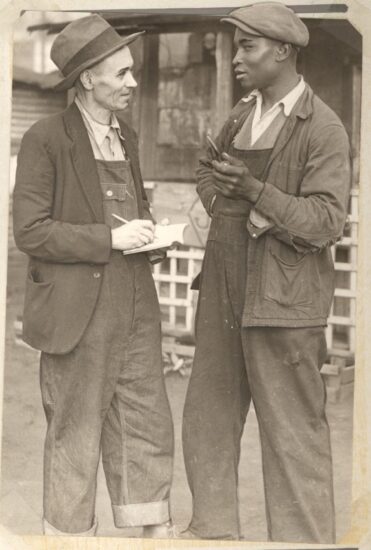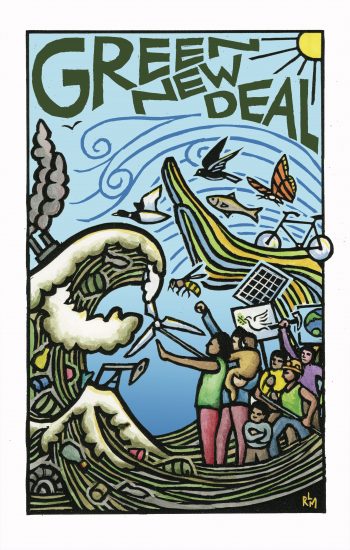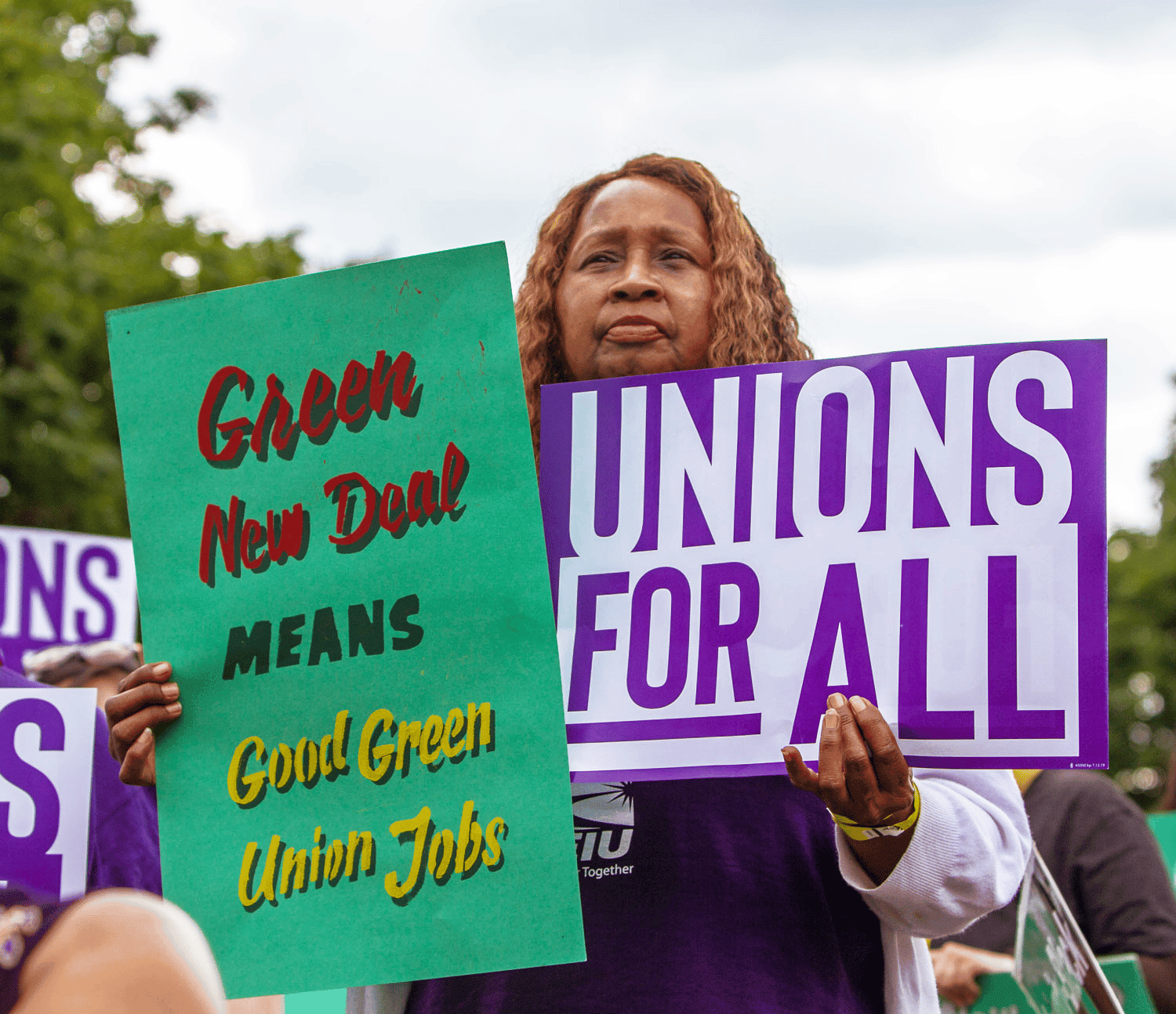In my unit on John Steinbeck’s The Grapes of Wrath, I’ve found so many of the Zinn Education Project’s resources to be helpful, especially the mixers and roleplays. In conjunction with finishing chapter 21 in the novel, I used the Zinn Education Project’s lesson, “From the New Deal to the Green New Deal.”
I teach English to high school juniors in school in Albuquerque, New Mexico, and this particular mixer was wonderful because it shared the stories of diverse people from across the nation during the struggles of the Great Depression and how the New Deal helped AND hindered them in their quest for survival and dignity.
It also provided our class a nice contemporary connection between the climate crisis that was present during the Dust Bowl years and the even more massive climate crisis we are facing now. Students were able to see those connections and it provided out class an entry point into understanding what the Green New Deal is and how it connects to the first New Deal.
I had a number of students curious to learn more about the Green New Deal after watching the video A Message from the Future, and the activity also allowed us to discuss the Build Back Better Plan currently being weakened in Congress.
In addition to the excellent and detailed description of the lesson provided, I also began our lesson with a freewrite and discussion on the question,
What obligations does a government have towards its citizens? What do you think? What does Steinbeck think?
We then watched “A Message from the Future” and proceeded with the mixer, which by this point my students are familiar with.
As with previous activities from the Zinn Ed Project, the lesson was high interest for students and led to some excellent connections and reflection, a few of which I will share below:

Jesse Jackson, left, the “mayor” of Hooverville, and Ruben Washington make plans to dig ditches to drain water from the streets in the settlement on January 13, 1935. Seattle Times Archive
The story in the mixer that made the biggest impression on me was Jesse Jackson. I think this because he was able to help a lot of people even though the cops were harassing and fighting the community that he made. Something that inspires me about the original New Deal programs is how many people they DID help even if they were closed off to a lot of other people. Some New Deal programs that I would like to see today would be the Federal Art Project for the sole reason that it funds visual art and artists, which I think is very cool.
I think the single best lesson to learn from the New Deal is to listen to the peoples opinion.
Connections I see between the New Deal and what is seen in the Grapes of Wrath is about the American economy, in which these jobs provided a little bit of hope in people’s lives. It’s how the hopes of the Joads is to obtain a job to earn an honest living through work and they take pride in that. People who had benefited from the New Deal benefited in the form of being able to work and backed up by the government and ensuring a degree of financial security.
Ella Baker stood out because she got her degree and it didn´t even help her get a job, when she finally did get a job she help stand up for justice and teach other people to stand up also.
I connected my story — Jesse Jackson’s story — to The Grapes of Wrath as I was the mayor of Hooverville and in the story, the Joads stayed at a Hooverville for a while.
I think the biggest “lesson” from the New Deal that we can learn for thinking about a “Green New Deal” is that we shouldn’t let large corporations run things and cause problems within communities. Some connections I made was Jesse Jackson was harassed by the police, similar to how the Joads were harassed.
If we were to do the green deal again I think we should focus on research related jobs, they promote the economy, have little to no impact on the environment, and you can have a million researchers without any labor leakage. I think the biggest lesson we can learn is that serious projects like these, that promote individual wealth and welfare just work, they simply improve everything around them with little loss in terms of money.
These types of activities, especially the social justice-focused lesson plans created for the Zinn Ed Project, provide opportunities for students to learn about the important, real people who drove the positive changes we’ve seen in our country over its history. It’s a true, “history from below.”
But more than just learning, students begin to empathize and see connections in their own lives and values with people who have been a part of huge, seemingly overwhelming changes. And, it also lets them think about what changes they’d like to see in our own world, and hopefully see that they can be a part of those changes.
Thanks again, Zinn Ed Project!








Twitter
Google plus
LinkedIn